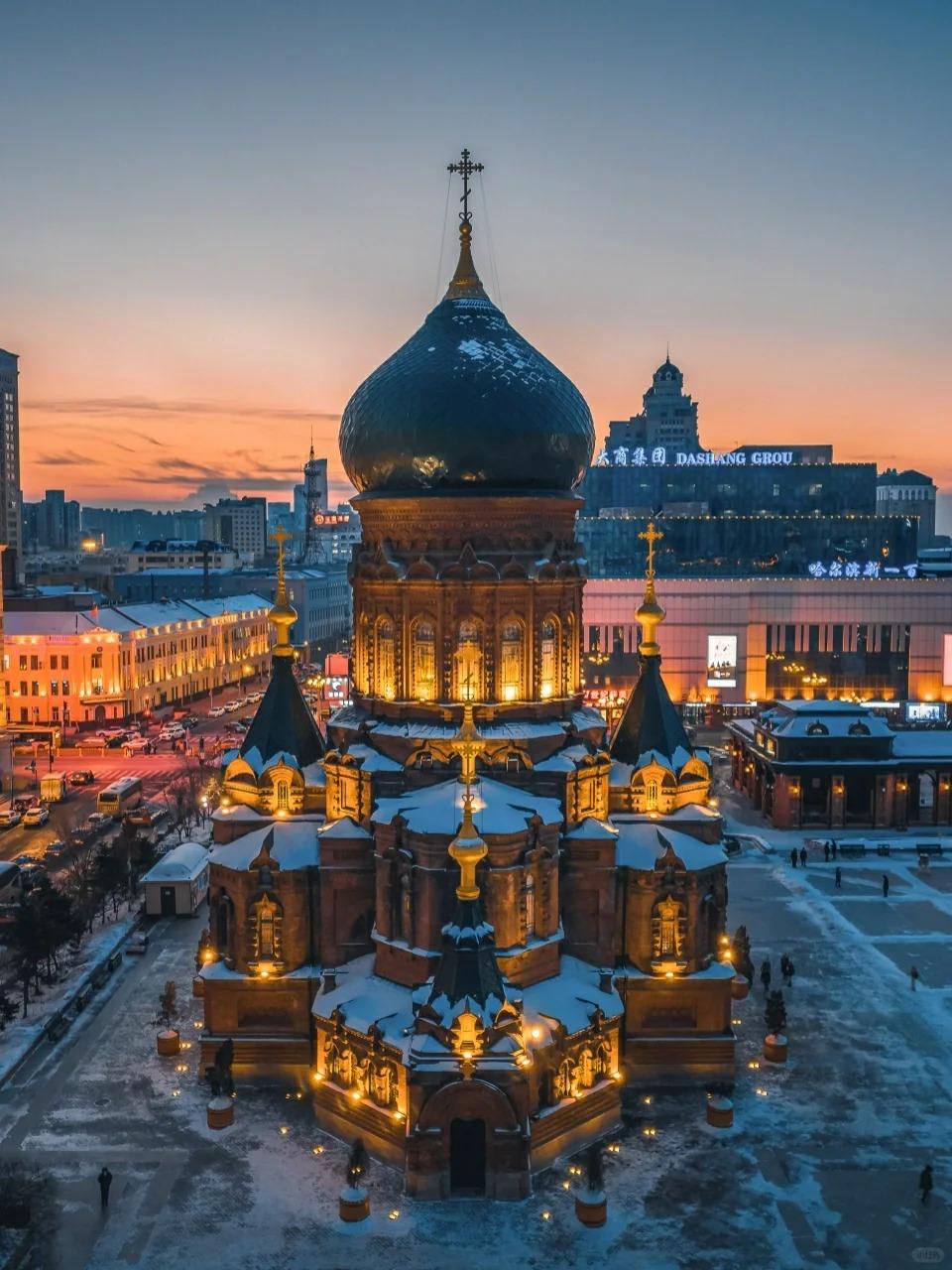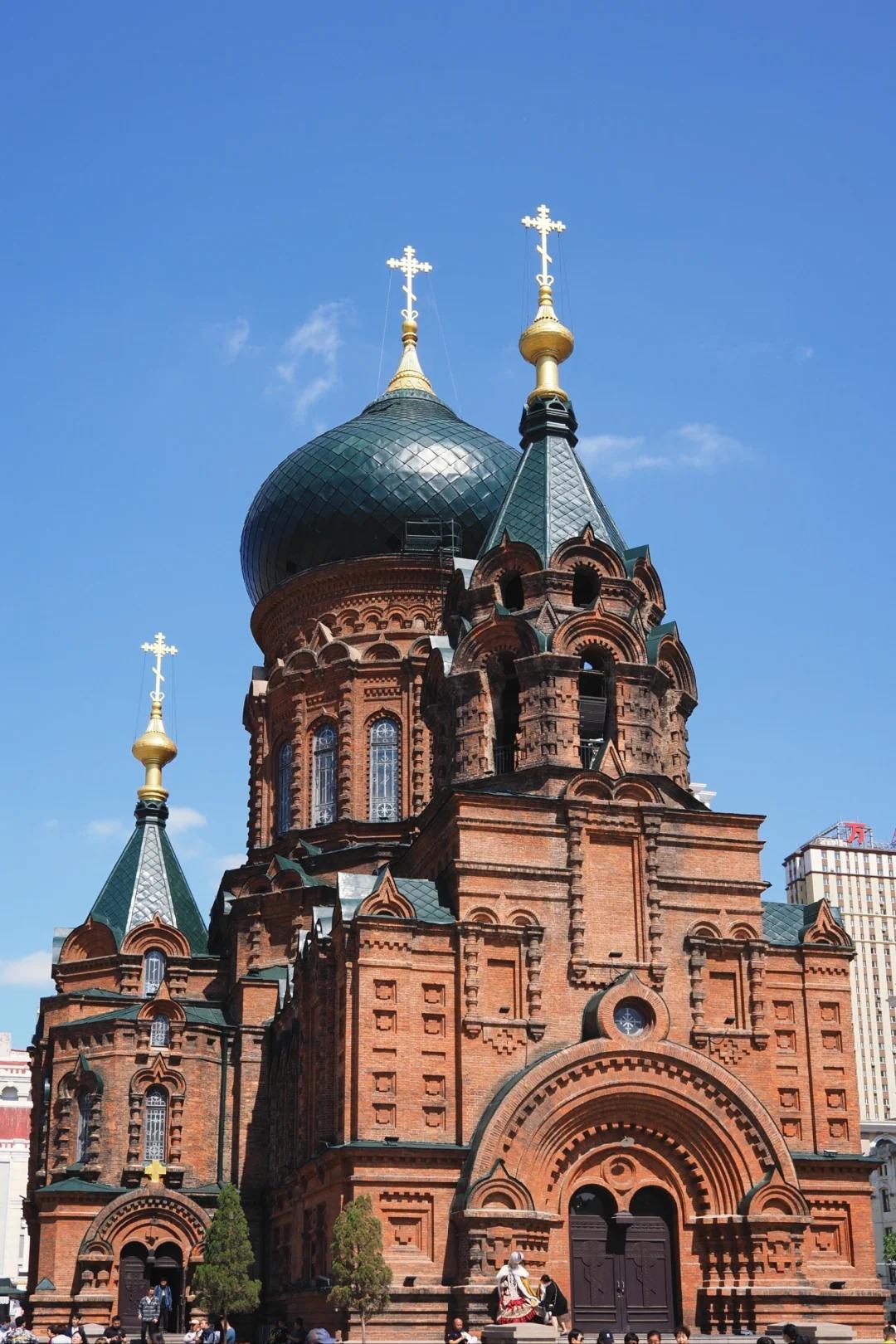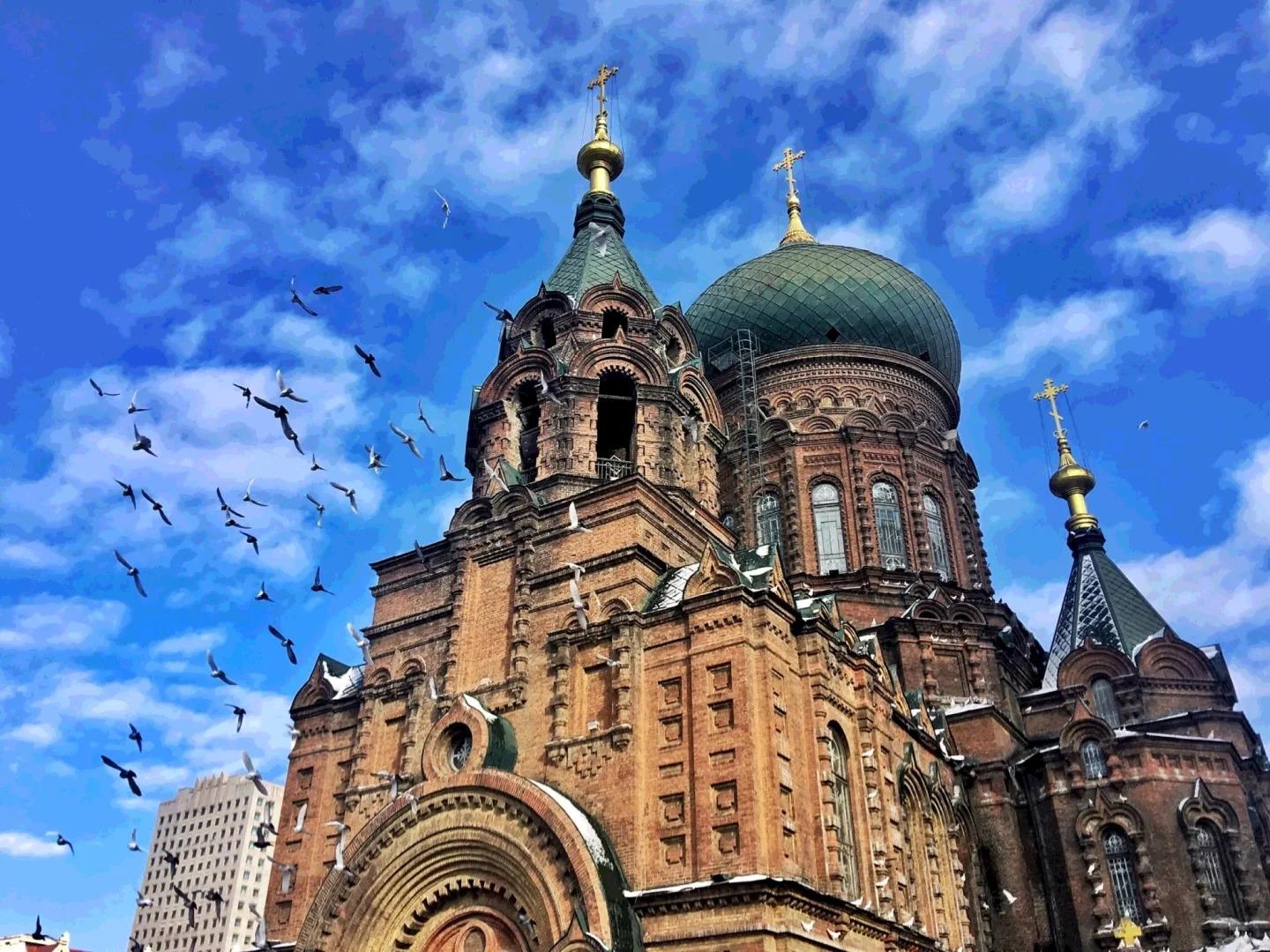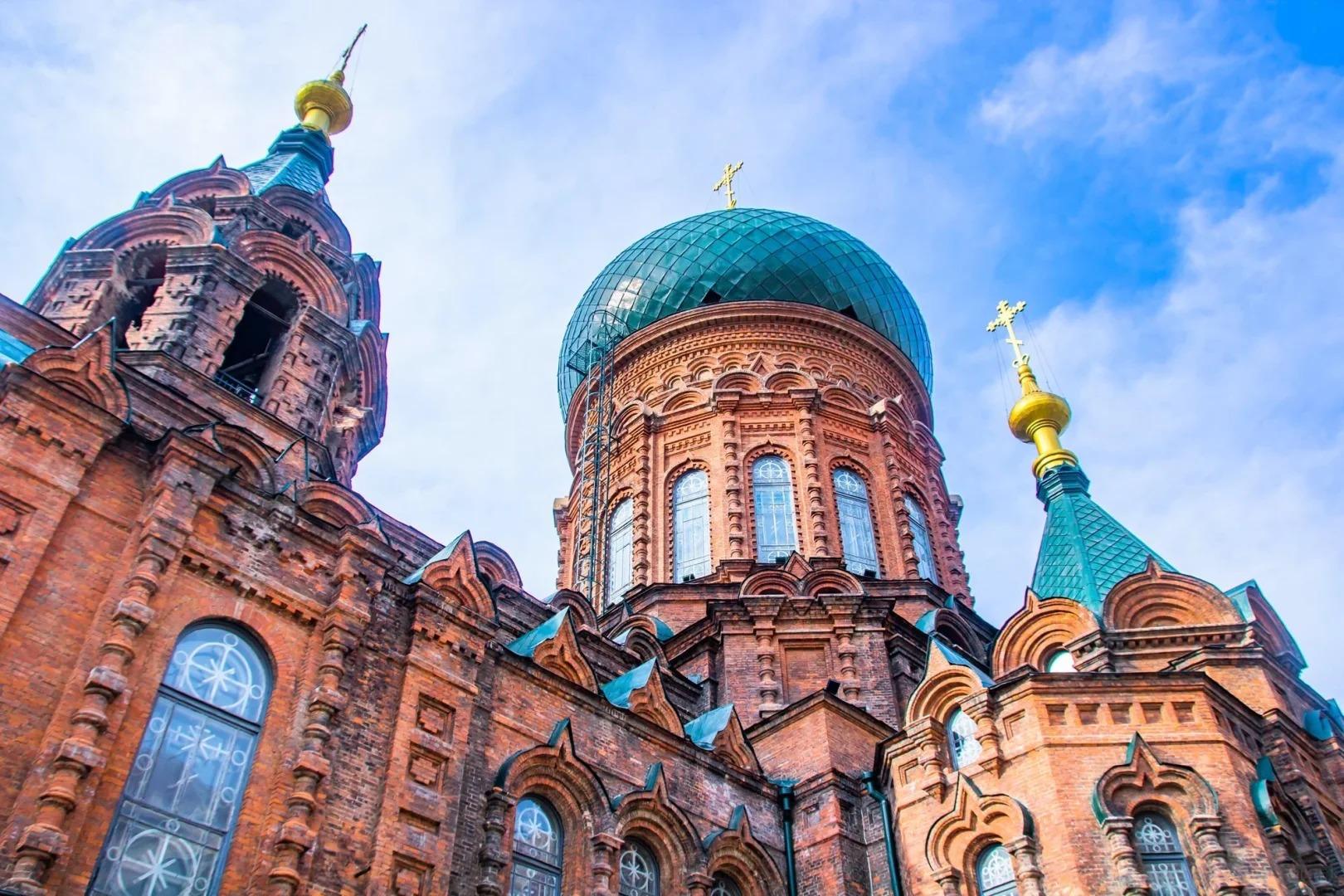Visiting Information
| Information | Details |
|---|---|
| Chinese Name | 圣索菲亚教堂 (Shèng Suǒfēiyà Jiàotáng) |
| Location and Address | 88 Toulong Street, Daoli District, Harbin, Heilongjiang Province, China |
| Opening Hours | 8:30 AM – 5:00 PM daily |
| Entrance Fee | 20 CNY for adults, free for children under 1.2 meters tall |
| How to Get There | By Metro: Line 1, get off at Zhaolin Park Station, use Exit A By Bus: Take bus 2, 13, 15, 64, 113, 114, or 119 to Saint Sophia Cathedral stop By Taxi: Easily accessible from anywhere in Harbin city center |
| Best Time for Visit | Year-round, but winter (December to February) offers unique snow scenery |
| Contact Info | Tel: +86 451 8468 4190 Email: Not available |
Overview
Saint Sophia Cathedral, located in Harbin, China, is the largest Orthodox church in the Far East. Built in 1907, this magnificent structure stands as a testament to the city’s unique history and multicultural past. Today, it serves as a museum and a symbol of Harbin’s architectural heritage, attracting visitors from around the world with its stunning Byzantine Revival style and historical significance.
Historical Background
The cathedral was constructed in 1907 during the time when Harbin was a major hub along the Chinese Eastern Railway, which brought many Russian immigrants to the area. It was built to serve the Russian community in Harbin and was named after Saint Sophia, the holy wisdom of God. The cathedral went through various periods of use and disuse, including serving as a warehouse during the Cultural Revolution. In 1997, the Harbin City Government undertook a major renovation project, restoring the cathedral to its former glory and converting it into a museum showcasing the history of Harbin’s architecture and development.

Architectural Features
- Byzantine Revival Style: Saint Sophia Cathedral is a prime example of Byzantine Revival architecture. Its design features a central dome surrounded by four smaller domes, creating a striking silhouette that dominates Harbin’s skyline. The exterior is characterized by its red brick facade and green-tipped domes, which contrast beautifully against the blue sky or white snow, depending on the season.
- Cruciform Layout: The cathedral’s floor plan follows a traditional cruciform layout, typical of Orthodox church architecture. This design symbolizes the cross and creates distinct spaces within the building for various liturgical functions, although the interior now serves as a museum space.
- Ornate Interior: While much of the original interior decoration has been lost over time, the cathedral’s inner structure still showcases impressive arches, vaulted ceilings, and expansive spaces. The renovation has preserved the architectural integrity while adapting the interior to its new role as a museum.
- Bell Tower: The cathedral features a bell tower that adds to its imposing presence. Originally used to call worshippers to prayer, the tower now stands as a silent reminder of the building’s religious past and serves as a distinctive architectural element.
Cultural Importance
Saint Sophia Cathedral holds immense cultural importance for Harbin and China as a whole. It represents a unique period in the city’s history when Russian influence was significant, reflecting the multicultural heritage of Harbin. The cathedral serves as a bridge between Chinese and Russian cultures, symbolizing the historical connections between these two nations. As a museum, it plays a crucial role in educating visitors about Harbin’s architectural evolution and the city’s development. The preservation of this landmark demonstrates China’s commitment to protecting diverse cultural heritage sites, including those with foreign origins. The cathedral has become an iconic symbol of Harbin, featured prominently in tourism promotions and cultural events, thus contributing to the city’s cultural identity and international recognition.
Surrounding Attractions
- Central Street (Zhongyang Dajie): Located just a short walk from Saint Sophia Cathedral, Central Street is a pedestrian-friendly avenue famous for its European-style architecture. Stretching for about 1.4 kilometers, it features buildings that showcase various architectural styles from the early 20th century. Visitors can enjoy shopping, dining, and admiring the historic facades that give Harbin its nickname, “Oriental Moscow.”
- Zhaolin Park: This nearby park is a popular recreational area for locals and tourists alike. In winter, it hosts the famous Harbin Ice Lantern Festival, where intricate ice sculptures are illuminated to create a magical atmosphere. During other seasons, it offers a pleasant green space for relaxation and enjoying nature within the urban environment.
- Flood Control Monument: Situated close to the cathedral, this monument commemorates the efforts to control flooding of the Songhua River. It provides visitors with insights into Harbin’s geographical challenges and the engineering feats undertaken to protect the city. The area around the monument offers good views of the river and is a popular spot for photographs.
- Stalin Park: Located along the Songhua River, Stalin Park is a long stretch of greenery that offers beautiful views of the waterfront. It’s an excellent place for a leisurely walk, especially in the evening when the area comes alive with locals enjoying outdoor activities. The park also provides a different perspective of Harbin’s cityscape, contrasting with the historic architecture around Saint Sophia Cathedral.

Photography Opportunities
- Exterior Shots: The cathedral’s stunning Byzantine Revival architecture offers excellent opportunities for exterior photography. The contrast between the red brick facade and the green domes creates a visually striking image, especially against a clear blue sky. Photographers can capture the cathedral’s grandeur from various angles, with the best shots often achieved from the square in front of the building.
- Seasonal Variations: Saint Sophia Cathedral presents different photographic opportunities throughout the year. In winter, the snow-covered domes and surrounding landscape create a magical, almost fairy-tale-like atmosphere. Spring and autumn offer beautiful color contrasts with the changing foliage, while summer provides long days with optimal lighting conditions.
- Night Photography: After dark, the cathedral is illuminated, creating a dramatic and romantic scene. Night photography enthusiasts can capture stunning images of the lit-up structure against the night sky, with the illuminated domes creating a particularly captivating sight.
- Interior Details: While photography inside the cathedral may be restricted, the interior architecture and museum exhibits offer interesting subjects for those allowed to take pictures. The vaulted ceilings, arches, and historical displays provide unique perspectives on the building’s history and current use.
Modern Importance
- Cultural Heritage Preservation: Saint Sophia Cathedral stands as a prime example of China’s efforts to preserve diverse cultural heritage sites. Its restoration and conversion into a museum demonstrate the country’s commitment to maintaining historical landmarks, even those with foreign origins. This approach enriches China’s cultural landscape and promotes a more inclusive understanding of its complex history.
- Tourism and Economic Impact: As one of Harbin’s most recognizable landmarks, Saint Sophia Cathedral plays a crucial role in the city’s tourism industry. It attracts visitors from across China and around the world, contributing significantly to the local economy. The cathedral’s popularity helps support various sectors, including hospitality, retail, and services, thus playing a vital role in Harbin’s economic development.
- Educational Resource: Functioning as a museum, the cathedral serves as an important educational resource. It offers visitors insights into Harbin’s architectural history, urban development, and cultural exchanges. Through its exhibits and the building itself, it provides a tangible link to the past, helping both locals and tourists understand the unique historical context that shaped modern Harbin.
- Symbol of Intercultural Exchange: In the contemporary context of international relations, Saint Sophia Cathedral symbolizes the historical connections between China and Russia. It serves as a reminder of the potential for cultural exchange and mutual influence between nations. This aspect of the cathedral’s significance contributes to diplomatic and cultural dialogues, fostering understanding and appreciation of shared historical experiences.

FAQ
- What is Saint Sophia Cathedral famous for?
Saint Sophia Cathedral is famous for being the largest Orthodox church in the Far East, its stunning Byzantine Revival architecture, and its role as a symbol of Harbin’s multicultural history and Russian influence. - What’s inside Saint Sophia Cathedral?
Inside Saint Sophia Cathedral, visitors can find a museum showcasing the history of Harbin’s architecture and urban development. The interior retains its impressive architectural features while housing exhibits on the city’s past. - Is Saint Sophia Cathedral free?
No, Saint Sophia Cathedral is not free. There is an entrance fee of 20 CNY for adults, though children under 1.2 meters tall can enter for free. - Is Saint Sophia Cathedral worth visiting?
Yes, Saint Sophia Cathedral is worth visiting for its unique architecture, historical significance, and the insights it offers into Harbin’s multicultural past. It’s a must-see landmark in Harbin. - What to do in Saint Sophia Cathedral?
In Saint Sophia Cathedral, you can explore the museum exhibits on Harbin’s history and architecture, admire the interior architectural features, and learn about the building’s past as an Orthodox church. - How do I get to Saint Sophia Cathedral in the local city?
In Harbin, you can reach Saint Sophia Cathedral by taking Metro Line 1 to Zhaolin Park Station and using Exit A. Alternatively, you can take buses 2, 13, 15, 64, 113, 114, or 119 to the Saint Sophia Cathedral stop. It’s also easily accessible by taxi from anywhere in the city center. - How to visit Saint Sophia Cathedral?
To visit Saint Sophia Cathedral, go during opening hours (8:30 AM – 5:00 PM), purchase a ticket at the entrance, and allow about 1-2 hours for your visit. Start with the exterior to appreciate the architecture, then explore the museum exhibits inside. Consider visiting early in the day to avoid crowds, and if possible, plan your visit during different seasons to experience the cathedral’s changing appearance, especially during winter when it’s surrounded by snow.





